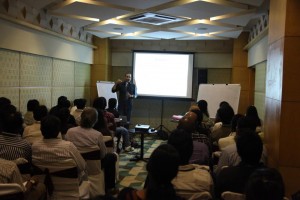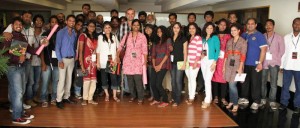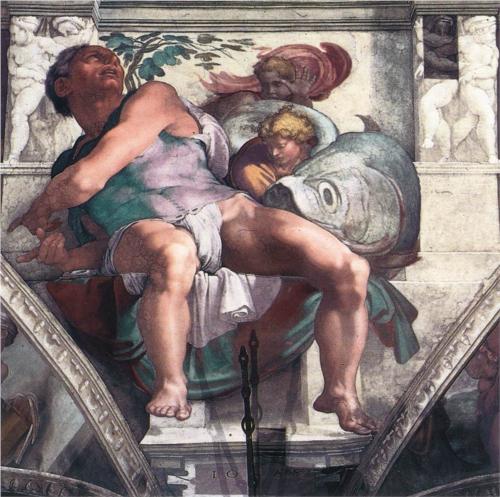 I spent last week in Hyderabad, India leading an arts in ministry track at the fourth annual India YCL Conference sponsored in part by One Hope, one of the more exciting and intellectually dynamic missions organizations in North America. Founded by Bob Hoskins in 1987 and located in Pompano Beach, Florida, the mission of the organization is simple yet ambitious—get the Word of God to children around the world. Its reach is aggressively global, working in over 140 countries and with close partnerships with local churches and organizations in every country. It is also emerging as a leader in global evangelism in the twenty-first century with its outcomes-based research, creative means to deliver Scripture to the world’s youth, and innovative partnerships. In addition, it makes its missions research and experience available to local churches in North America as a means to help them reach their local communities with the gospel.
I spent last week in Hyderabad, India leading an arts in ministry track at the fourth annual India YCL Conference sponsored in part by One Hope, one of the more exciting and intellectually dynamic missions organizations in North America. Founded by Bob Hoskins in 1987 and located in Pompano Beach, Florida, the mission of the organization is simple yet ambitious—get the Word of God to children around the world. Its reach is aggressively global, working in over 140 countries and with close partnerships with local churches and organizations in every country. It is also emerging as a leader in global evangelism in the twenty-first century with its outcomes-based research, creative means to deliver Scripture to the world’s youth, and innovative partnerships. In addition, it makes its missions research and experience available to local churches in North America as a means to help them reach their local communities with the gospel.
The YCL conference in India is one of the means by which One Hope grows and cultivates young leaders in the Indian church, equipping them to develop ways to impact children and young people, in partnership with a local community development foundation and the New Life Assemblies of God. The fourth annual YCL conference attracted over two hundred and fifty young people to the two-day conference to participate in one of four tracks: business development, led by Hope Foundation director George Hoskins; technology and social media, led by Brian Boyd of Media Connect Partners in New York City; film and storytelling, with Phil and Kathleen Cooke of Cooke Pictures, based in Southern California; and the arts track, led by me. Rob Hoskins, President of One Hope, led an adjacent track for pastors, with Keith Boyer and Jurie Kriel, to help pastors encourage and disciple these young people in their congregations.
An important part of the conference was offering the opportunity for attendees to work together to design and develop practical ministry projects. Some of the attendees will be selected to continue work on their ministry projects as part of a four-month Creative Lab initiative, giving these young men and women support and resources to help them realize their ministry vision.
 The Arts Workshop at YCL Conference, Hyderabad, India
The Arts Workshop at YCL Conference, Hyderabad, India
My approach to the arts track was two-fold, to develop a robust Reformational theological foundation for the importance and necessity of the arts in the church and to create a safe space for artists to meet others who share their interests as well as face the challenges they experience in the church, which, like the evangelical church in North America, is often threatened by them. The keynote address by Rob Hoskins offered a passionate and informed declaration of the importance for the arts and creativity in the contemporary church and thus served as an important introduction to the work I intended to do.
My theological foundation offered a theology of creation: God continues to call his creation very good, coming to us through our senses. I then explored a theology of culture: that God has given us the responsibility and desire to cultivate his creation. As Andy Crouch observed in his book, Culture Making: “culture is what we make of the world…to take the world as it’s given to us and make something else.” And finally I presented a theology of vocation, of calling, offering a biblical basis for the use of their talents and passions to edify the church, serve as a witness in their particular part of culture, and to serve their neighbor.
I also discussed the importance of the wonderful “uselessness” of art as a witness to the operation of grace, which undermines and overthrows the transactional, law-based regime of this world, testifying to an alien presence that is not of this world. Art distinguishes itself from advertising, propaganda, and other art-related practices because it is not a means but an end in itself. It exists as a gift from the artist to the viewer, listener, reader, to be enjoyed in itself. In this way art destroys the concept of Karma, revealing, if only for a moment, that we ultimately do not get what we deserve and that the foundation of the world is a gift—one-way, unconditional love. The very existence of art testifies to a promise (grace) that will overwhelm the powers of this world (law). This idea is especially difficult in Indian culture, which is predicated on an intricate transactional and highly leveraged economy of gift and hospitality that obligates and binds the recipient. In the course of our discussions, we talked about the challenges of producing explicitly “Christian art,” given the fact that most art in Indian culture is made within and for a specific religious tradition, of which there are many. And so we discussed the possibility that a powerful “Christian art” may be an art that resists that temptation to narrow its audience, choosing rather to expand and not restrict art’s scope to one’s own religious community, confident that the Lord is the Lord and Savior of all peoples, and offering to their audience an experience that is expansively human, and not merely “Hindu,” “Muslim,” or “Christian” (or “Western”).
 Participants in the Arts Track
Participants in the Arts Track
Perhaps the most important part of the two-day conference was the opportunity for artists to meet others and develop relationships that support their work and their walk with Christ. Most artists in the church experience isolation, are looked at with suspicion, both by their families, who want them to do something more practical, and their church leaders, who are worried that their creativity will compromise doctrinal stability and disturb traditional practices. Far from accommodating art, the Gospel demands it. Art is not a marginal practice on the fringe of both contemporary culture and the church, but is at the heart of God’s work in both. Therefore, I urged them not to remain isolated and on the margins. Many of these young artists are planning to meet together for bible studies, reading groups, and informal critiques, in which they share their work. And I will look forward to offering guidance and resources as well as initiating and facilitating on-line discussions. Artists in the church, however, don’t often make life easy for their pastors and church leadership. And so I emphasized the importance of using their gifts to serve their pastor and their leadership, to think creatively about ways that they can use their talents to strengthen the local church and its witness to the community. This will help them create a space of trust within the church that will allow them to work productively as artists in the church for the culture.











